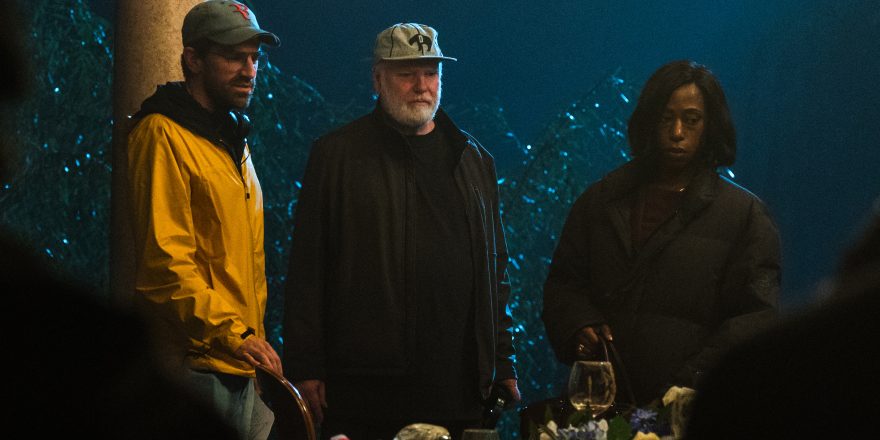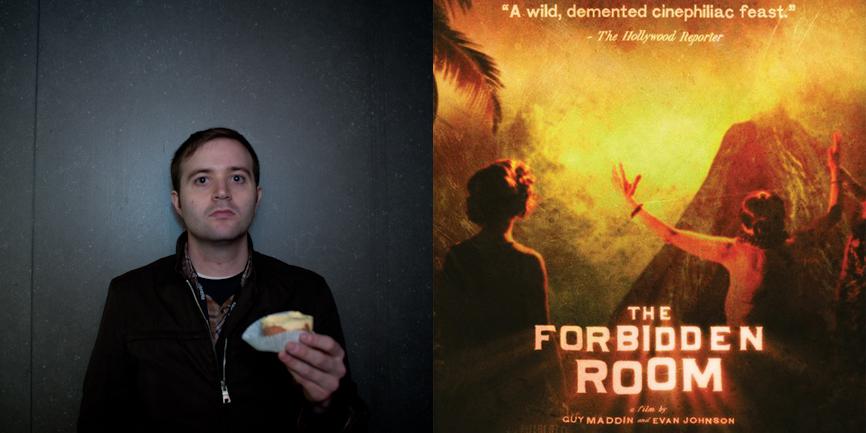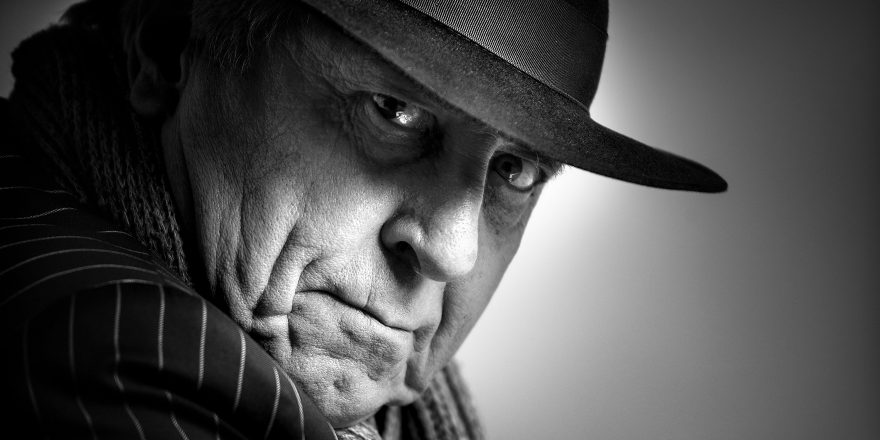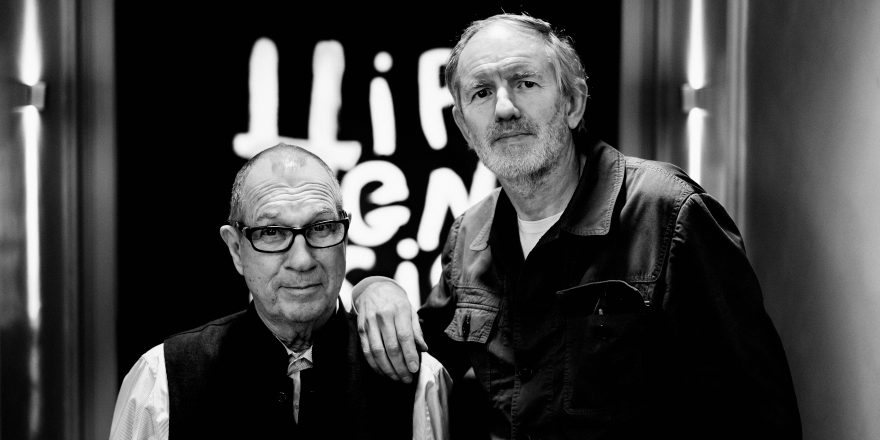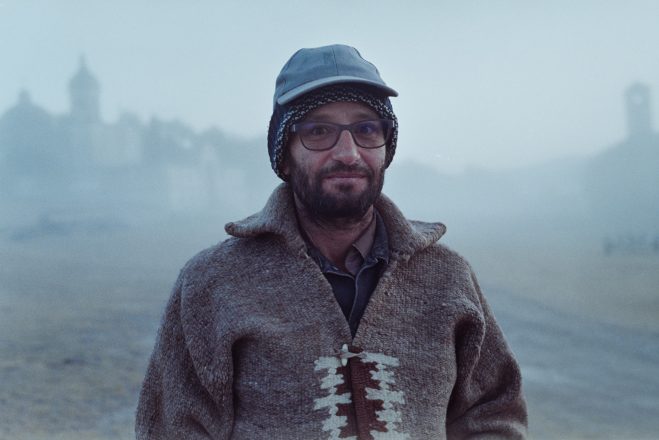Three Great Things is Talkhouse’s series in which artists tell us about three things they absolutely love. To mark the current release in theaters of the delightfully offbeat political apocalyptic comedy Rumours, directed by Guy Maddin, Evan Johnson and Galen Johnson and starring Cate Blanchett, Charles Dance and Alicia Vikander, legendary Canadian auteur Maddin shared some of the things he’s most passionate about. — N.D.
The Third Policeman by Flann O’Brien
The first thing that comes to mind is the Irish author Flann O’Brien’s novel The Third Policeman. His first novel is called At Swim-Two-Birds; I read it when I was 25 years old, and I think he wrote it in Dublin when he was 25 years old. It’s amazing, a strange mixture of Irish literary pastiches, including ancient Irish writings, along with bildungsromans and depictions of college riff-raff life, and he’s really good at mimicking the writing styles of many different genres.
Maybe four or five years ago, I finally read O’Brien’s follow-up novel, which he wrote at age 26, The Third Policeman. It was rejected by one publisher, and that was such a blow to O’Brien, he just put the manuscript in a drawer forever. When he died, his widow discovered it and it was published. And it’s a masterpiece, a surreal, (posthumous) adventure story. Its narrator is not very smart, and he’s commited some unforgivable crime, but he’s also been killed and doesn’t realize it, so he’s narrating his adventures in some sort of Irish limbo. It’s just so dreamy and beautiful. And by definition, pure and oneiric, and also very gloomy, but so funny too. O’Brien was one of the great stylists, a writer who could mix dark and light in such hilarious ways. He crafts beautiful sentences, and I know for a fact that James Joyce loved him. I love The Third Policeman, and he’s a phenomenon, a forgotten titan.
Postmodern Storytelling
This goes back to my grandmother, who was born in 1879 and died when I was 14 at the age of 91. She would tell me bedtime stories from memory, and I loved the experience. She only had so many stories, so often they repeated themselves, but they could transport me in different ways, depending on how well she was telling it or where she was sitting on the bed. Sometimes she would sit on my feet, and my feet would go to sleep way before I did, but I would be too timid to tell this sweet, gentle soul to move. Sometimes she’d forget parts of the story, but those ellipses would make the tale more mysterious. Sometimes I had to actively fill in the gaps, and sometimes she’d fill in ellipses with elements of another story.
This all made me very aware, early on, that stories were full of variables. And that even when I was totally sucked into a story, there was a grandmother telling me that story. And so when I see movies or read books that show me “the grandmother” while they’re telling the story, I’m especially thrilled. I don’t mind being taken out of a movie and knowing that it’s been made by a bunch of people who are aware it’s a movie. I guess you would call it postmodernism, but I loved it without knowing what it was called.
In my own movies, I can’t help but acknowledge that there’s a camera being pointed at some actors doing some things, and that the actors are bathed in light that’s I’ve put there, or is there by accident. And people are aware of that process, in the same way as when you look at art made by a young child in a creative frenzy, it can be so disarmingly honest, frank and beautiful – and made with such sheer determination – that it almost brings tears to your eyes, because it seems to be pure emotion expressed quickly on a piece of paper. But you can see the kid’s handprints and spirit. You can even get some insight from these paw prints into how happy or sad or disturbed the kid is, or whether Child Protective Services should be called. Sometimes when things are more primitively made, when you’re really showing the grandmother, it leaves a work of art more immediately available to the consumer.
Movie viewers are getting better now at watching all different kinds of things – the great democratization of just making things for TikTok with your phone has really helped. I had always hoped when everyone got a camera that somewhere the new Rimbaud would emerge, the really youthful poet who had just the right voice for their time – and that may well be happening right now, without anyone making a big fuss about it. I’m really encouraged about the future of filmmaking, because I think viewers are more open-minded now. They know how to take it. It’s really nice to see all that stuff breaking down, because now I can make work that’s slick too. Rumors, my most recent movie, is maybe the slickest so far, but it still makes people aware that it’s a movie.
My Dog
I love my dog, who’s eight years old now. Her name is Aunt Lil, but we just call her Lil or Nibs, which is a short version of Her Nibs, because she’s got a royal attitude. She’s a French bulldog with a real sense of humor. Maybe not the driest or the most sophisticated sense of humor, but she knows when she’s being funny and she amuses me endlessly.
We went through the pandemic together, just the two of us in extreme isolation, and we wordlessly communicated in very elaborate ways. I’m going to start crying, just thinking about it. I’m not sure how much of our communication I projected onto the situation, but certainly there’s a million and one ways you can communicate with a dog. Lil has a pretty big vocabulary and I find that if I use full sentences with her, she’s more likely to be obedient. It’s not an order, but an explanation for why.
During the pandemic, when we were so isolated, I loved being in beautiful environments with her. There’s a family cottage where she and I are both at our happiest, and we got into a happiness feedback loop there together. We really know that place. We know just how far the ducks will swim before they fly off when Lil is swimming after them. We know the different smells of the seasons. We know when there’s a coyote around. We know it’s no fun to play with the soccer ball when the grass is really wet in the spring, but it is in the midsummer and the autumn.
In the winter, Winnipeg is the coldest city in the Western Hemisphere. The rivers freeze over and you can just walk on them; if no one’s around, you can take your dog off leash and just have so much fun. (You do have to keep an eye out for coyotes, though.) The air is so dry and crystalline and sparkly, and we’re in our element. It’s so beautiful walking my dog in the winter, I don’t ever want the winter to end, whereas before I got a dog, I could hardly wait for the winter to end. If I see the temperature is starting to rise, I’ll start getting disappointed because there’s nothing like a dog walk on a really cold night when you both have frosty whiskers. It’s just beautiful. I love it, and I love watching the steam come out of her nostrils. There might be steam coming out of my nostrils too, but we’re definitely both producing a lot of atmosphere. The kind I like to shoot in a film.
Featured image, showing Guy Maddin (center) with co-director Evan Johnson and actor Nikki Amuka-Bird during the making of Rumours, is courtesy Bleecker Street.


